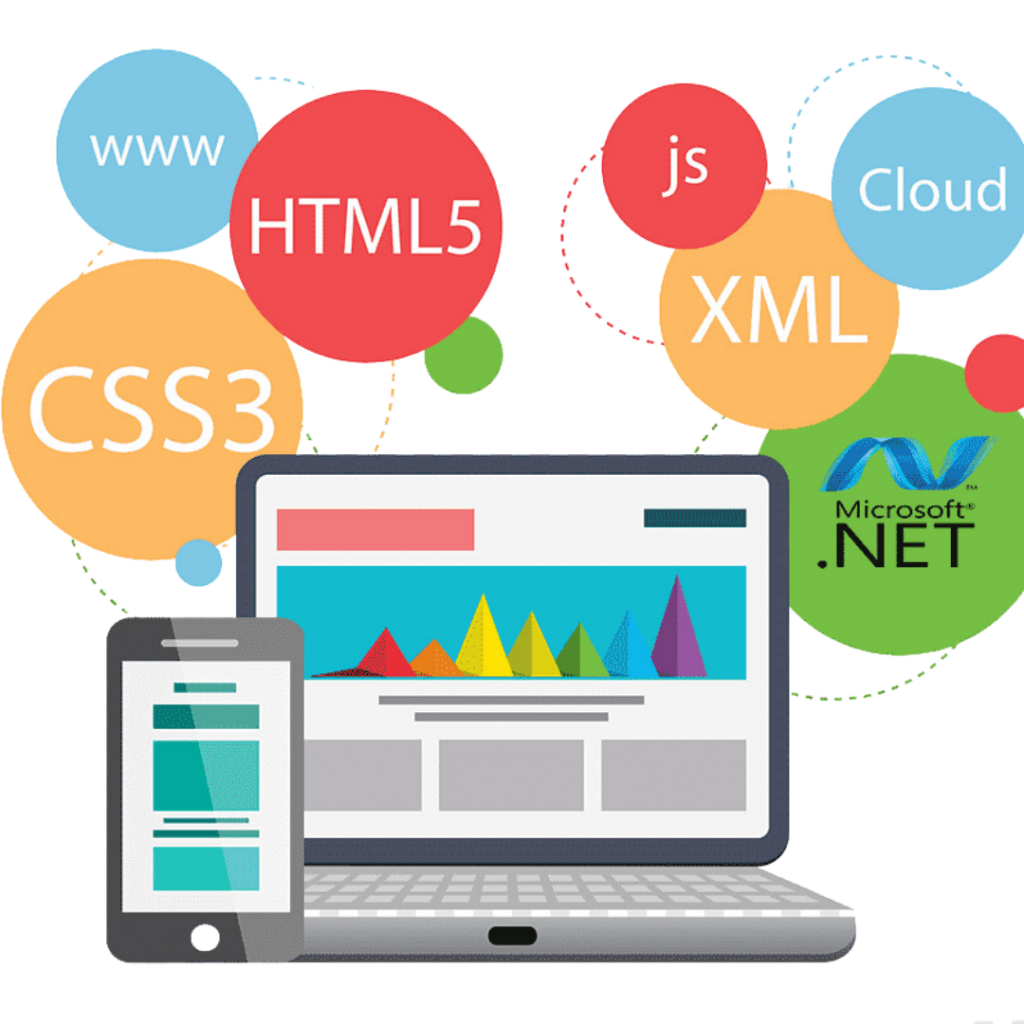Web Development
Showcase how your product & services had been implemented, performed and delivered successfully.
Showcase how your product & services had been implemented, performed and delivered successfully.
Web development is the process of creating websites and web applications using programming languages such as HTML, CSS, and JavaScript. Here are some steps involved in web development:
Planning: This involves defining the purpose and goals of your website or application, identifying your target audience, and determining the features and functionality required.
Design: The design phase involves creating the visual elements of your website or application, including layout, color scheme, typography, and branding.
Front-end development: This involves building the user interface and visual elements of your website or application using HTML, CSS, and JavaScript.
Web development is a complex process that requires a strong understanding of programming languages and web technologies. It’s important to work with experienced developers and designers to ensure your website or application is of high quality and meets the needs of your users.
Back-end development: This involves building the server-side functionality of your website or application, including database design, server configuration, and programming using server-side languages like PHP, Python, or Ruby.
Testing: This involves testing your website or application to ensure it functions properly and is free of bugs or errors.
Launch: Once your website or application is complete and has been tested, it’s time to launch it to the public.
Maintenance: Maintaining your website or application involves ongoing updates, bug fixes, and security patches to ensure it remains functional and secure.


Server and database setup: This involves setting up the server and database infrastructure for your website or web application. You’ll need to choose a server technology (such as Apache or Nginx) and a database technology (such as MySQL or MongoDB) that best suits your needs.
Server-side scripting: This involves writing code that runs on the server to handle requests and responses to and from the client-side. Common server-side scripting languages include PHP, Python, and Ruby.
Database design: This involves designing the database schema, including the tables, columns, and relationships between them. It’s important to design your database schema in a way that maximizes efficiency and scalability.
API development: APIs enable the front-end of the website to communicate with the back-end. This involves creating endpoints that allow data to be sent and received between the client and server.
Security: Back-end development also involves implementing security measures to protect your website or application from attacks such as SQL injection, cross-site scripting (XSS), and cross-site request forgery (CSRF).
Back-end web development involves creating the server-side functionality of a website or web application. This includes database design, server-side scripting, and APIs (Application Programming Interfaces) that enable the front-end (client-side) of the website to communicate with the back-end. Here are some key elements of back-end development:
Back-end development is a critical component of building a functional and robust website or web application. It’s important to work with experienced back-end developers who have a strong understanding of server-side technologies, database design, and security to ensure the success of your project.

Web design is the process of creating the visual layout and user interface of a website. It involves the use of various design elements such as color, typography, images, and layout to create an attractive and functional website that is easy to navigate and use.
Web design services offered by digital marketing agencies can include designing and developing websites from scratch, redesigning existing websites, and optimizing websites for better user experience and search engine optimization (SEO).
A good web design should not only be aesthetically pleasing but also easy to navigate and use, with a clear hierarchy of information and a consistent visual style. A well-designed website can help businesses establish credibility, improve user engagement and conversion rates, and increase overall customer satisfaction.
